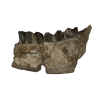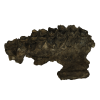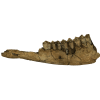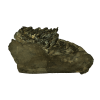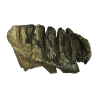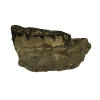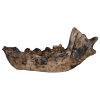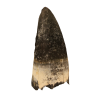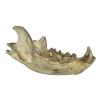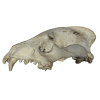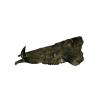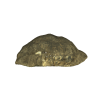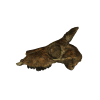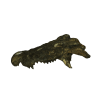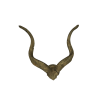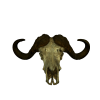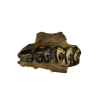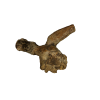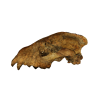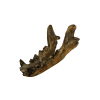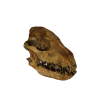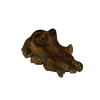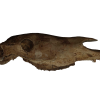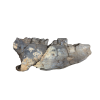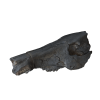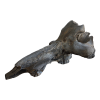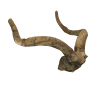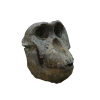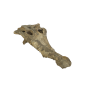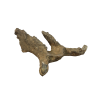This is a modern skull of the extant Spotted Hyaena (Crocuta crocuta) which is the largest member of the family Hyaenidae. Spotted hyaena (Crocuta crocuta) are native to Sub Saharan Africa and are widespread.
Spotted hyaeana (Crocuta crocuta) are primarily are hunters but are also effective scavengers and are the most common of the large predators. They live in large groups and have a complex social behavior.
The dentition of the spotted hyaena is specialized. They have enlarged 3rd and 4th premolars which are adapted bone crushing as well as a large sharp cutting carnassial situated behind these. The skull of the spotted hyaena is larger than the striped hyaena and has a narrower sagittal crest.
Spotted hyaena are believed to have first moved out of Africa some 3.5 million years ago. A common ancestor with the genus Hyaena (which includes the Striped and Brown hyaena) is believed to have existed about 10 million years ago.






